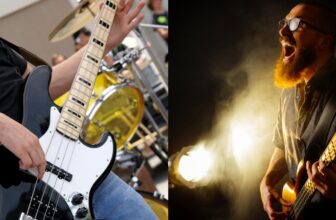The Essential Instruments in a Rock Band
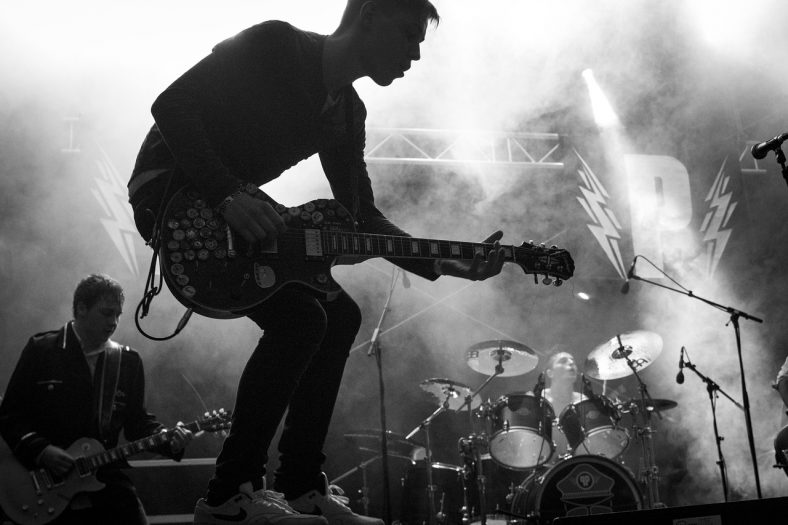
A rock band is a musical ensemble that performs rock music. Rock bands most commonly have four members, with two guitarists (one for lead guitar and another for rhythm guitar), a bassist, and a drummer, with one of the members, also singing lead vocals.
When on the topic of rock bands, all rock bands consist of almost the same instrument ensemble.
If you listen and follow certain rock bands, you are most likely to notice that the same instruments are used in each one. Most frequently consisted of four members, those instruments are two guitars (one lead, one rhythm), one bass guitar, and one drum.
However, there are other formations that include vocalists who do not play an instrument, as well as other instruments.
Contents
Drums
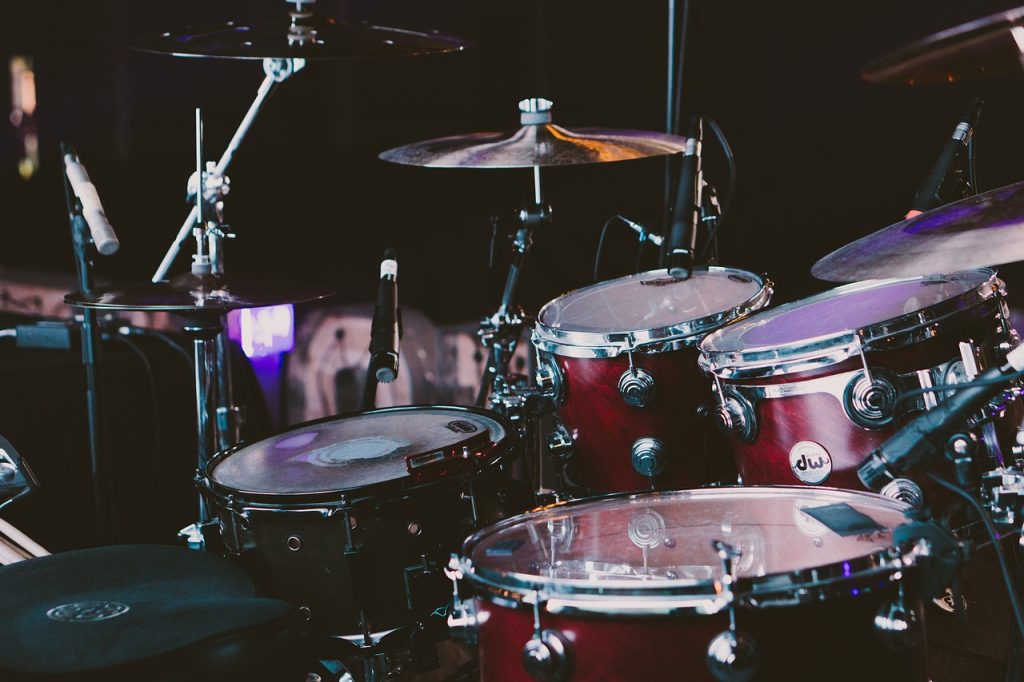
Rock bands favor acoustic drum sets, which are usually made up of a bass drum, snare drum, multiple toms, and multiple cymbals (including a hi-hat, which can be opened and closed using a foot pedal).
One of the common drum set configurations in rock music is a standard, four-piece drum set that consists of one bass drum, one snare drum, and three tom-toms. These are usually played with at least a pair of hi-hat cymbals, a ride cymbal, and a crash cymbal. Drummer can often have more cymbals based on their preferences.
Most rock genres make use of a single bass drum pedal, with double pedals being favored for metal music.
Drums play a crucial part in any rock band. Let’s face it, who hasn’t played air drums in their life while listening to their favorite rock band or rock song?
The drums help establish the beat, mood, and tempo. They ‘lock in’ with the bass guitarist. They also help provide texture to the music and fill up space.
Some of the greatest rock drummers include John Bonham (Led Zeppelin), Keith Moon (the Who), Dave Grohl (Foo Fighters), Neil Pearl (Rush), Roger Taylor (Queen), and Ginger Baker (Cream).
Lead Guitar
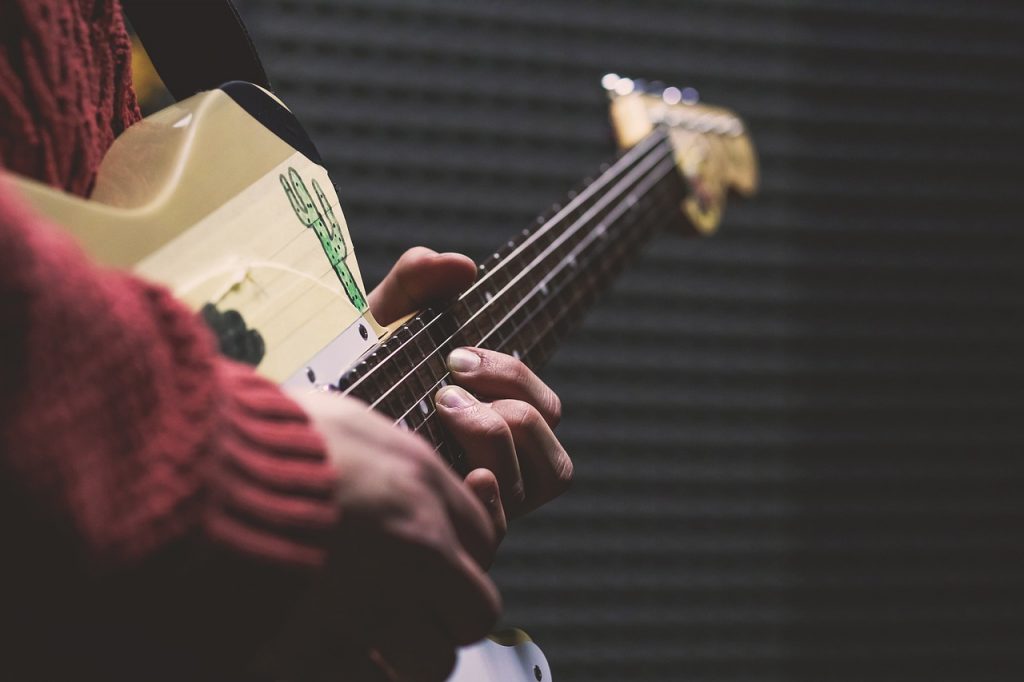
The lead guitar is a part in which the guitarist helps provide melody lines, riffs, and guitar solos. The lead guitar is the featured guitar and is supported by the rhythm guitar.
The lead guitarist is the one who usually plays double-stops and single-note-based lines.
In rock bands, the lead guitar is frequently an electric guitar. These guitars must be plugged into an amp in order to be heard and can be played similarly to an acoustic guitar – by strumming, plucking, tapping, or slapping the strings.
The amp helps make the electric guitar stand out, and guitar pedals can be used to create reverb and distortion, and other effects. Frequently, the lead guitarist is also the lead vocalist.
Lead guitar in rock bands is an inspiration to many. While listening to your favorite rock band or song, you are most likely playing the song on an imaginative guitar.
Some of the greatest rock lead guitarists include Eric Clapton, Slash, Jack White, Eddie Van Halen, Brian May (Queen), Jimi Hendrix, and Stevie Ray Vaughn (Stevie Ray Vaughn and Double Trouble).
Rhythm Guitar
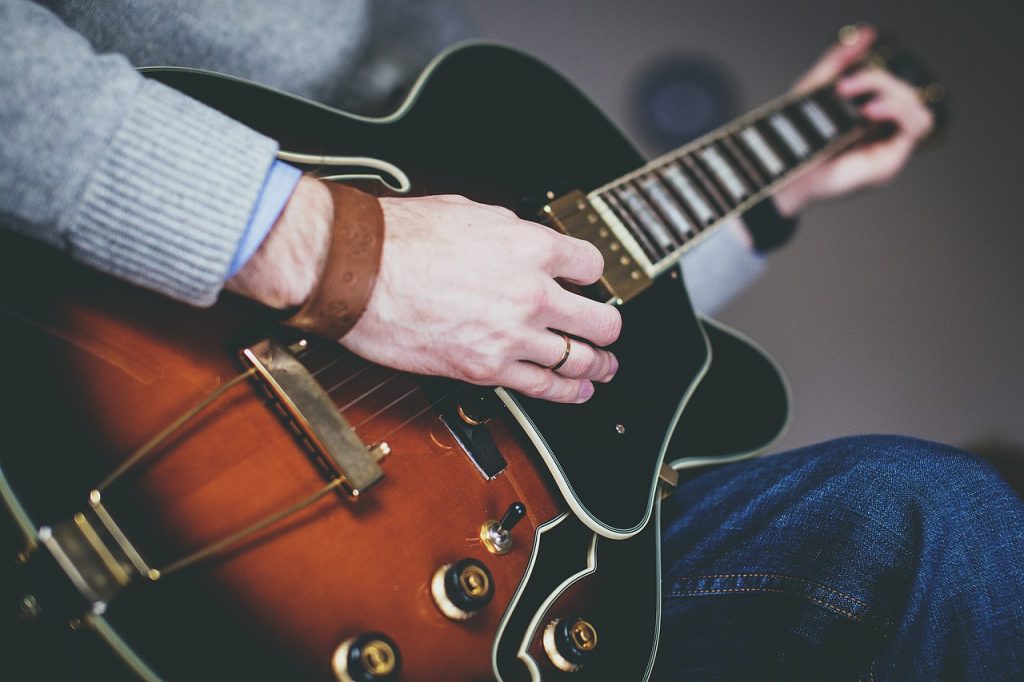
The rhythm essentially plays the supporting chords and helps provide the formation of the music alongside the drummer and the bassist.
Rhythm guitarists may also play some of the more complex passages of the song. However, this is usually done with the intent of providing the rhythm of the song.
The rhythm guitar is not a separate instrument from the lead guitar and instead refers to the guitarist’s role in the band. As the lead guitar, in a rock band, the rhythm guitar is often an electric guitar. It is also played similarly to the lead guitar.
While many take away from what the rhythm guitar provides for a song, it is inevitable to confess that without it, the song will simply collapse and wouldn’t be what it is. Time to put some respect on it.
Some of the best rock rhythm guitarists of all time include Chuck Berry, James Hetfield (Metallica), Dave Grohl (Foo Fighters), Billy Gibbons (ZZ Top), John Lennon, and Malcolm Young (AC/DC).
Bass Guitar
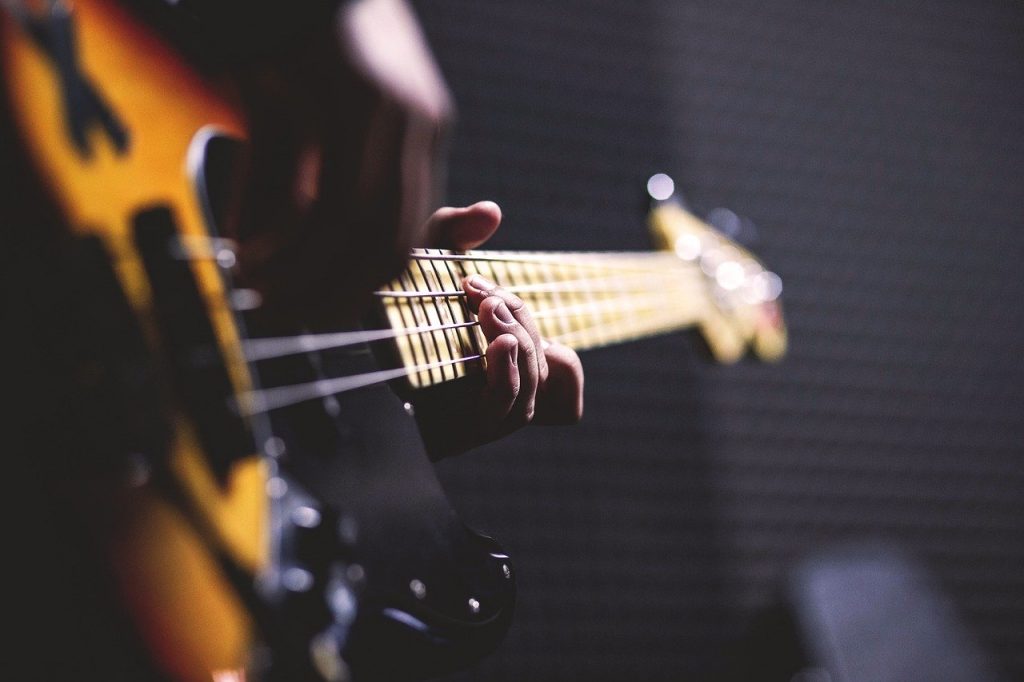
The bass guitar is the lowest-pitched guitar and is similar in look to an electric guitar. It has thicker strings to help it play lower-pitched notes. The standard bass guitar has 4 strings and it’s the one most commonly used.
However, you can also get bass guitars with 5, 6, or even 7 strings!
The bass guitar replaced the large double bass instrument as the primary bass instrument in music in the 1950s.
The bass helps provide the rhythm section of a band, alongside the drums and the rhythm guitar. It helps link the “dry” sound of the drums to the warmer sound of the melody and harmony by locking into the beat of the bass drum.
There is a continuous running joke about bass guitars and bassists, however, without the bass, a song will not be what it is. You have to feel the vibrations to get into the spirits of the song and enjoy it.
Some of the best rock bassists include Paul McCartney, John Paul Jones (Led Zeppelin), Lemmy (Motörhead), Geddy Lee (Rush), and John Entwistle (The Who).
Singer (The Most Versatile Instrument!)

The lead vocalist is often the dominant sound in any band. They hold the attention of the audience when performing.
The voice can be considered a performer’s most versatile instrument, and singers use microphones to amplify their voice.
They occasionally add effects such as reverbs and delays to their voice in order to help add to the music.
In a rock band, the lead vocalist is often the band’s leader and spokesperson. They are often the first ‘sound’ the listeners hear, and audiences tend to connect with vocalists the most.
The vocalist often also plays another instrument in the band, frequently the lead or rhythm guitar.
Time to face the facts. The vocalist is what the whole band relies on to convey the whole energy to the crowd. If the vocalists aren’t enjoying themselves then the crowd will most likely follow in his/her energy.
Some well-known rock singers include Freddie Mercury (Queen), Steven Tyler (Aerosmith), Bono (U2), Axl Rose (Guns N’ Roses), Stevie Nicks (Fleetwood Mac), and David Bowie.
Keyboards
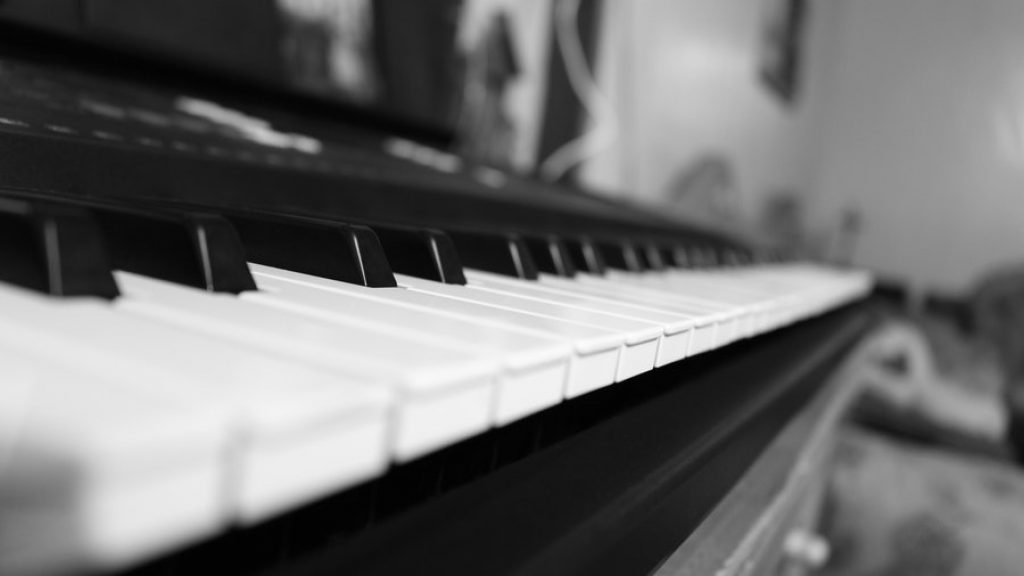
Not all rock bands have keyboardists. However, that does not mean that there is no space for a keyboard player in rock!
Keyboardists help provide harmonic accompaniment to the music. They can also use the synthesizer to play the role of other instruments if needed.
Keyboards play a supporting role in rock and help add to the versatility of the music.
They can also help ‘pad’ the existing sound and help add vibrancy to performances.
To be honest with ourselves, each one of us has played the piano on our personal piano called a table. When listening to our favorite rock band or song, all of us have given our best performance on the piano while imagining it in front of us.
Some well-known rock keyboardists include Rod Argent (The Zombies), Gregg Allman (The Allman Brothers Band), Richard Wright (Pink Floyd), and Tony Banks (Genesis).
Summary
While rock bands can include any configuration of instruments and musicians, the most common instruments that you will find in any rock band are the drums, lead guitar, rhythm guitar, and bass guitar.
Keyboardists are less common, though there are many well-known rock keyboard players who have inspired musicians around the world.
Finally, the singer or lead vocalist helps round off the band, providing a focus for the audience’s attention and often serving as the frontman and spokesperson for the band.


